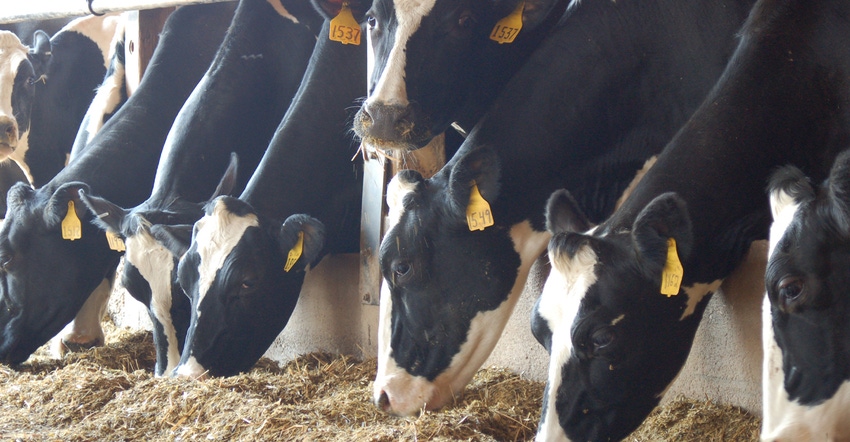A guide to choosing the right probiotic product for your operation.
August 11, 2021

Sponsored Content
To say that the marketplace is flooded with prebiotic and probiotic feed additives is an understatement. In 2018, roughly 516 prebiotic and probiotic feed additives were included in Feedstuffs’ Direct-fed Microbial, Enzyme & Forage Additive Compendium. Add to this unreported products—branded products not submitted for inclusion and custom formulations for feed mills or nutrition groups—and the number is staggering. How can you ensure the right product is selected for your herd? Focus on ingredients and manufacturing.
Because prebiotics and probiotics have different modes of action within the animal, it is important to identify specific herd challenges or goals before making your selection. The non-living nature of prebiotics simplifies the manufacturing and handing of these ingredients, so the focus in this article will be on probiotics. Consider products that are proven to produce responses that are compatible with your objectives, are backed by quality manufacturing, and align with your storage and feed-out capabilities.
PROBIOTIC MANUFACTURING AND HANDLING
Probiotics must remain viable, or alive, through manufacturing, shipping, storage (in the mill and at the farm), mixing, and feeding to benefit your herd. Ingredient selection is the primary factor to consider when overcoming these challenges and ensuring quality control.
Live bacteria
Bacterial probiotics run a wide gamut when it comes to shelf life and handling preferences after manufacture, both as standalone and prebiotic/probiotic combination products.
Spore forming bacterial species, like Bacillus, are extremely durable and can tolerate most challenges including time, temperature changes, moisture, and acidity. These bacteria can be stored in packaging for 24+ months and in feed and mineral mixes for at least 3 months, if kept dry. Spore forming bacteria are valued for their many different feed applications and ability to remain viable at feed out in the TMR.
Conversely, many non-spore forming, anaerobic bacteria, such as Megasphera elsdenii, must be maintained at less than 40°F, have a shelf life of 14 days, and must be delivered to the cow via bolus.
Other probiotics, like lactic acid bacteria, fall in between these two extremes and can be stored for up to 12 months. The latest technology, as used in Dairyman’s Edge® CORE, now enables several strains of probiotic bacteria to be added to mineral or grain mixes at the feed mill and fed out over a period of 30-60 days.
Live yeast
Live yeast (Saccharomyces cerevisiae) is a fungal probiotic that is generally stable when kept cool and dry, but can lose viability when heat challenged in mills with little climate control. Sullivan and Bradford1 evaluated live yeast as delivered from the manufacturer and found only 1 out of 6 live yeast products met manufacturer guarantees and viability was reduced when stored at 104°F for 2 weeks.
While live yeast may be more stable for extended periods of time and at higher temperatures when diluted in vitamin and mineral mixes, this trial highlights the necessity of working with reputable suppliers who consistently evaluate the viability of their product and leverage live yeast strains with a higher heat resistance (Sullivan and Bradford, ibid).
HOW MUCH IS TOO MUCH?
Research shows feeding 40-50 billion colony forming units (CFU) of live yeast stimulates an optimal response and that the incremental gain from adding additional CFU is not justified due to the cost. Similarly, while the total CFU for bacterial probiotics can vary widely depending on the species and strain selected, over feeding is not generally beneficial. Unfortunately, ingredients are sometimes added to formulas as tag dressing and are not actually being fed at high enough rates to elicit a response. Understanding appropriate feeding rates for selected products is vital.
TAKE HOME MESSAGE
Prebiotics and probiotics are high value ingredients that should be selected and handled with care. Do not hesitate to request quality control data from a supplier before selecting your product. Companies with quality products backed by stringent manufacturing criteria are willing to share this information so you can make informed decisions. Working with reputable manufacturers, like Papillon, who routinely monitor all prebiotic and probiotic ingredients ensures that your investment will perform at the highest possible level.
1Sullivan ML, Bradford BJ. Viable cell yield from active dry yeast products and effects of storage temperature and diluent on yeast cell viability. Journal of Dairy Science 2011;94(1):526-531. 10.3168/jds.2010-3553.
About the Author(s)
You May Also Like


.png?width=300&auto=webp&quality=80&disable=upscale)
